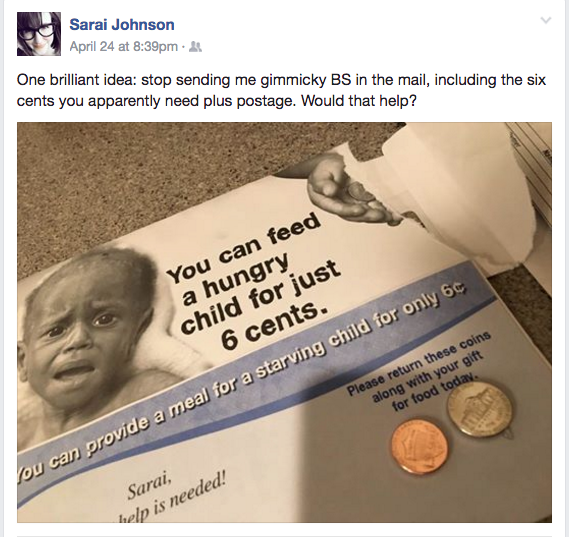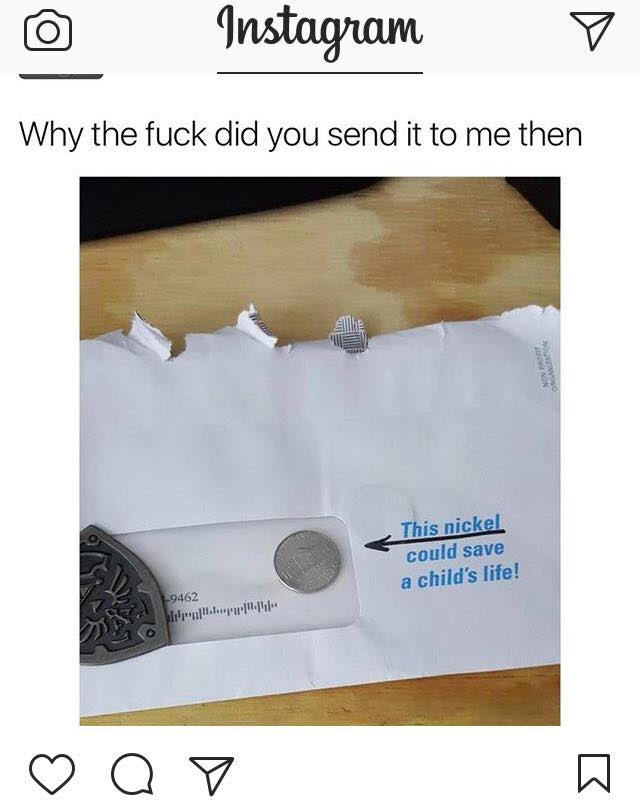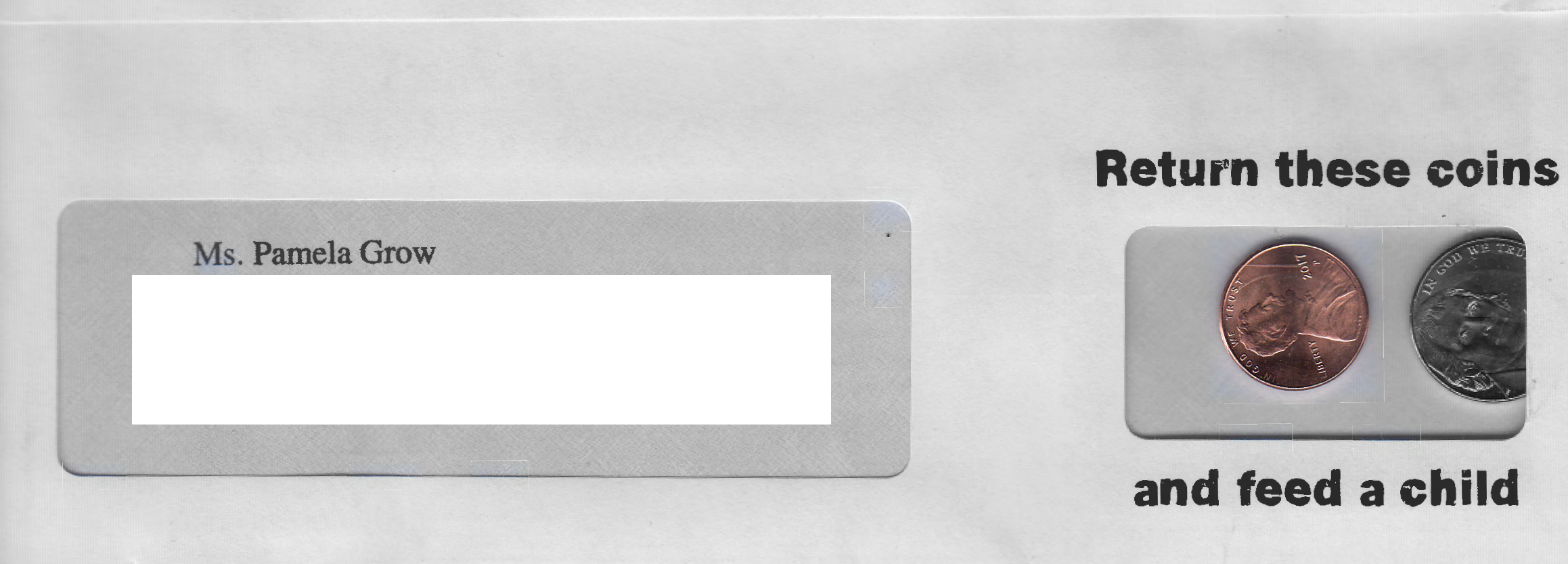
For this week’s mailbox installment, I’m going *there* once again, venturing off into the land of “how not to.” I’m also going to vent a little bit, but it’ll be short, and it’ll actually be worthwhile for you to hear. I promise.
I’m going to start off by pointing out something that’s not only true, but likely pretty obvious to anyone who’s been a fundraiser or had some other connection to donor communications. Here’s the thing: donor communications are never black and white, and direct mail is included in the equation. How can it be that a tried and true direct mail tactic, while garnering great results, belongs in the category of “should nots” when it comes to crafting compelling direct mail? It’s a complicated conundrum, but I’m going to get to the heart of it as best I can.
You should know that I have a pile of mail that I don’t like very much, and sadly, I find myself adding to it often. And a lot of the additions to this unfortunate stash contain coins. Why? Probably because many nonprofit direct response gurus will tell you that the use of coins in a fundraising appeal “boosts response rate by about a third.”
Maybe it does. But what do donors say? I’ll allow the Instagram and Facebook posts below shed some light on it for you, as it contains authentic, honest donor reactions. I’ve also included a piece from my “how not to” file of direct mail. I probably don’t need to tell you this, but as a fundraiser *and* a donor, my instant reaction pretty much paralleled the former two. It has not grown more favorable with time for the simple reason that it never will.



The foundation for this type of appeal and the primary rationale behind it is rooted firmly in Professor Robert Cialdini’s reciprocity rule. This approach, which creates and offers something tangible in order to encourage the recipient to “pay it forward” and give back, is often used in the world of direct mail as a tactic, and it is costly. Because logically speaking, you’ve got to give something to get something in return, right? This makes sense in terms of investing for the sake of long-term solutions, because you’ve got to spend money to make it. But when it means giving people crappy little trinkets and mailing labels in our appeals to boost their giving? Nah.
Are these examples from mystery organizations acquisition pieces or were they sent to regular donors? In the case of the piece that was sent to me, it was part of a disjointed cycle of mail I received throughout the year, straight from an organization that I chose to support. It feels impersonal and directionless. They may abide by a schedule, but they apparently have little indication of who I am as a donor, and that’s sad.
In case you haven’t noticed, I absolutely loathe this kind of mail, and a lot of other donors feel the same way. As you can see from the posts above, these attempts take the form of a cliche that is ripe for internet fodder. These bad apples give direct mail fundraising a bad name, and that’s not fair. And when I receive them from organizations I’m already supporting? I scratch my head.
I’ll leave you with something to remember: tricks and gimmicks are rarely ever donor-focused, nor are they aimed at fostering genuine long-term donor relationships. Sure, they might generate fast results, but they don’t lend themselves to stability or sustainability. They are bright, shiny objects (sometimes literally) best left in the land of “how to not.” What are you really paying for when you play this game?

















 I can’t wait to meet with you personally.
I can’t wait to meet with you personally.
Comments on this entry are closed.